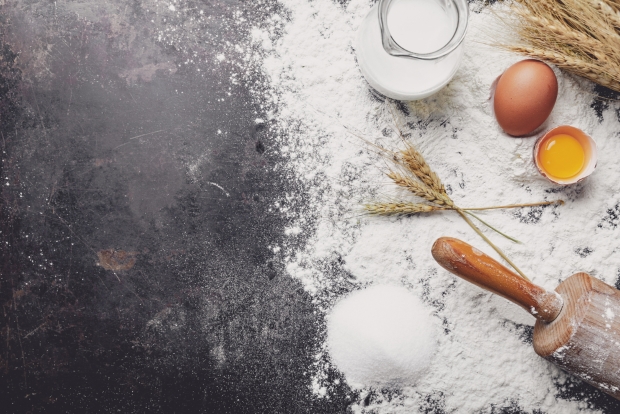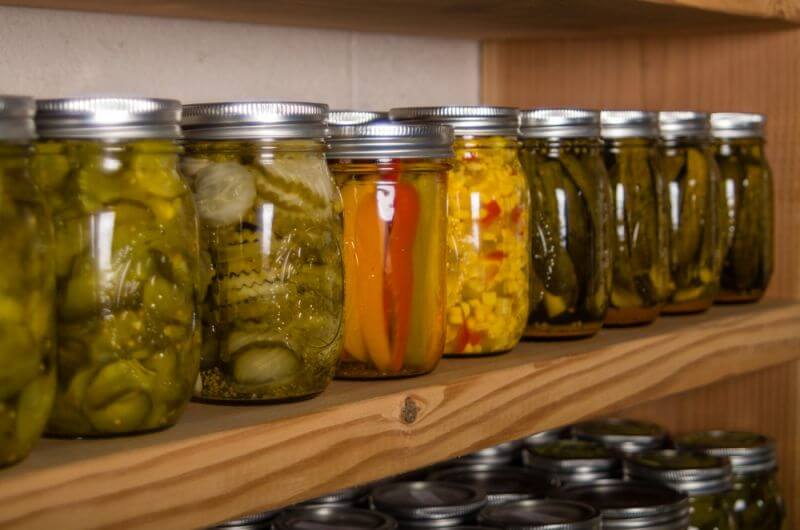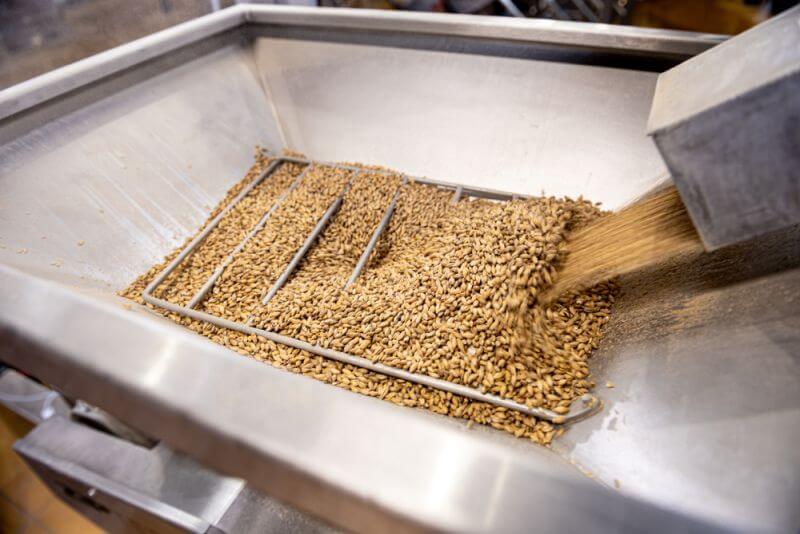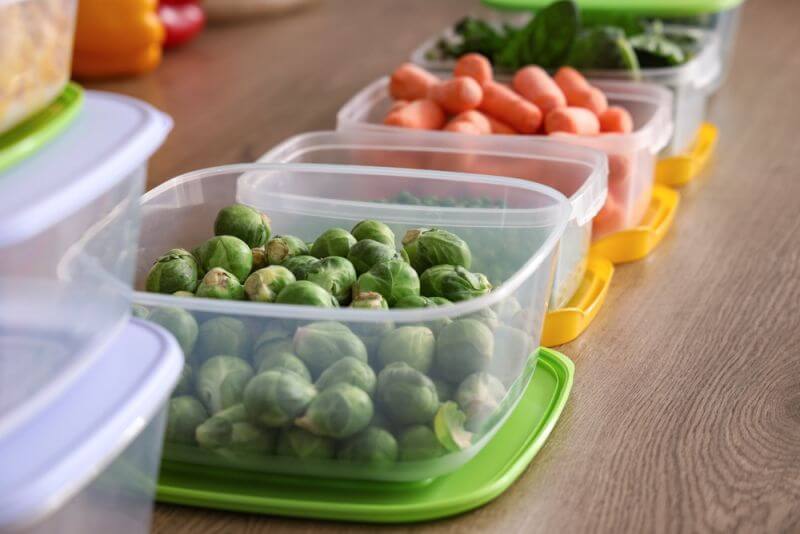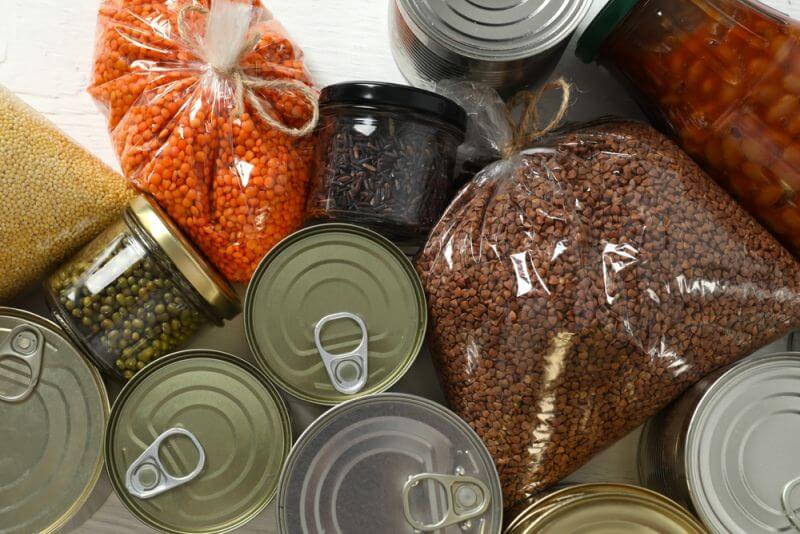The basic premise of food storage is that since we cannot know what the future holds, it makes sense to prepare.
A prudent person saves money, invests wisely, maintains insurance, owns a first aid kit and a fire extinguisher, procures the means to defend himself and his loved ones and writes a will. These are responsible behaviors, like brushing your teeth. A prudent person also puts up some food storage and just four basic ingredients can form a strong foundation.
It may be hard to imagine going without food here in America where we have food in such abundance, but even most Americans are likely to benefit from food storage at some point during their lives. It may not be a widespread disaster either. It may be personal volatility such as loss of employment.
There are also large-scale threats to the food distribution systems we depend on. Several factors combine to imperil the global food supply:
- The Global Nature of Food Distribution – Globalizing food distribution makes us vulnerable to hunger on a level the world has not yet known. Much of the food we eat now comes from half a world away. Because of the interdependent nature of globalized food distribution, it is vulnerable to economic collapse, shortage of fossil fuels, EMP or other disasters.
- Just in Time Inventory – Just in time inventory saves money but makes us more vulnerable to volatility. Stores work off a three-day inventory. Without resupply, they would run out of food within a couple of days. Panic buying can shorten the supply to hours. Storing food in case of a poor harvest or poor livestock yield used to protect us from volatility but companies traded this cushion for short term economic gain.
- Urbanization – The mass movement of people to cities has resulted in crime, disease and pollution and has also decreased the number of farmers. At the time of the great depression, a quarter of all Americans had a garden and perhaps a few chickens and an equal number had parents who gardened, so half the population was able to produce food and stave off hunger. Today, less than 2% of the population produces any food at all. If a similar food shortage were to occur today, we would not be able to grow enough food to save ourselves.
- Economic Threats – Food distribution is an economic transaction. Risks that affect the economic end of the transaction also affect the distribution of food. Globalizing economics makes us vulnerable to global economic collapse.
- Monoculture – Large commercial farms focus on a single species of crop at a time, short-circuiting the natural order and making entire crops vulnerable to being wiped out all at once. We are part of a large, complex, non-linear system that makes it very difficult to foresee all the potential consequences of our actions. The result is things seldom turn out the way we intend when we meddle with natural systems.
Hunger and disease caused or complicated by malnutrition are more likely to kill you than bullets. 36 million people die per year due to hunger. It may be hard to appreciate this if you live in the USA and do not travel internationally but one person in six doesn’t have enough food to maintain their health. Students of history will note that it’s only a question of time until the USA falters and then we may once again become a “developing nation.”
 The Four Basics of Food Storage
The Four Basics of Food Storage
Just four basic ingredients can be combined to create dozens of recipes. In fact, in Passport to Survival Four Foods and More to Use and Store, author Esther Dickey details some fifteen main recipes that use only these four foods and a further 95 variations (some of which incorporate other foods). Although this book was written in 1969, it had at least 20 printings and it’s still possible to find copies for sale online. If you’re lucky, you might find a copy in a Desert Industries thrift store. They also don’t need much rotation. The first three can be stored indefinitely under ideal conditions, but nonfat powdered milk has a maximum storage life of 25-years.
- Wheat
- Honey
- Salt
- Powdered Milk
Just these four basics form the foundation of food storage.
Role of the Four Basics
I don’t suggest that people only store these four foods. I also don’t suggest people store just one type of food, such as dry packed food, freeze-dried food or retort-packed food (like MREs). A diversified food storage will give you greater ability to adapt to the unknown. Once you have your foundation, store a little of each. Also be sure to store cooking gear, baking supplies and fuel.
Here are some examples of types of food to store and why:
- Shelf-stable Foods that You Normally Eat – Store what you eat and eat what you store. Storing shelf-stable food that you normally eat helps prevent gastrointestinal problems from adapting to new foods and it’s comforting to eat foods that you are used to. These foods also typically require minimal preparation. Two examples are canned foods and crackers.
- Foods that Do Not Require Cooking – Many of the types of foods in this list may fall into this category, but whether foods need cooking is important to consider when choosing food storage. Cooking requires fuel and the same circumstances that led to the food shortage may also probably make fuel hard to come by. Also, cooking in shelters or during evacuation may not be possible.
- Dry Packed Foods – Wheat and salt are examples of dry packed foods. Storage life varies, but most dry packed foods require soaking or cooking to make them edible. Dry packed foods is that they are generally less expensive than other types of foods and price is an important consideration.
- Freeze Dried Foods – Freeze dried foods are lightweight so they are ideal for foot travel when you can treat water along the route and have plenty of fuel for cooking. A 25-year shelf life (under ideal conditions) means that they don’t need a lot of rotation.
- MRES – MREs are great because they need little or no preparation, but they are temperature sensitive. Every 10 degrees above 60 degrees Fahrenheit cuts storage life in half, and they seldom last longer than five years so they must be rotated. Some people say terrible things will happen to you if you eat them for than a few days, but my own experience contradicts this. I ate nothing but MREs for over six months and suffered no ill effects.
The role of the four basics is to provide a multiuse foundation of foods to build your food storage upon. The fact that they don’t need much rotation when properly stored is a big help. Add some spices and cooking supplies and the four basics can be used to stretch or create substitutes for a surprising number of recipes.
 Wheat
Wheat
Hard red winter wheat stores best and by wheat, I mean whole kernels, not cracked, ground into flour or otherwise processed. The wheat above is packed in a No. 10 can (double annealed) with an oxygen absorber at an LDS home storage center (anyone can buy from them) and two plastic lids are added per case of six cans.
Some outfits fill the can with nitrogen to displace oxygen and take other measures, but they just add unnecessary cost. Properly stored, this can of wheat will outlive you several times over so if you don’t use it, it can provide food security for future generations.
Nonfat Powdered Milk
A nice feature of nonfat milk, salt and honey is that they are all useful in everyday cooking, so they can be stored along with other shelf-stable foods that you normally eat as well as stored in long-term food storage.
Nonfat Milk is a nutritious ingredient in many dishes. The removal of milkfat prevents nonfat powdered milk from going rancid and the removal of water through drying, kills pathogens and deprives them of water, further preventing spoilage. Still, to maximize storage life and preserve taste, powdered milk should be stored in an airtight, opaque container with an oxygen absorber. The ideal storage temperature for powdered milk 50 degrees Fahrenheit. Storing powdered milk at warmer temperatures decreases shelf life.
 Salt
Salt
All life needs salt, but animals especially need salt to generate nerve impulses and to maintain electrolyte and fluid balances. The universal need for salt has resulted in war when it has become scarce. Salt is necessary for cooking, medical treatment, meat preservation, drying hides other household uses.
Because there is more salt in animal tissues than in plant tissues, people living a nomadic lifestyle and subsisting on livestock have little need for added salt, but people living a sedentary agrarian lifestyle and subsisting on crops, need salt added to their diet. Many dishes list salt as an ingredient.
Honey
Make sure you know what you are buying when purchasing honey. Some vendors adulterate honey with corn syrup, which is near-flavorless and adulterated honey can be difficult to distinguish from the pure product. Laws regarding labeling vary by nation, further confusing the matter.
Both types of honey above are pure honey from North America. While both pure and raw honey are free of additional ingredients or flavorings, the raw honey (on the right) has not been pasteurized or filtered. Unless honey is labeled raw, it has probably been processed and some people believe that raw honey tastes better and has more antioxidants and enzymes than processed honey. I will point out, however, that there doesn’t seem to be a broad scientific consensus either way.
Something scientists agree on is that it is not recommended that children eat honey until one year of age to prevent infantile botulism, even though the risk is very small. Personally, I would risk the consumption of honey by an infant if it would prevent malnourishment.
As Esther Dickey points out, we aren’t as tempted to overeat honey as a sweetener as we do refined sugar.
Cooking with the Four Basics
The staff of life can be combined with water, salt, honey and powdered milk and prepared different ways, yielding a variety of tastes, texture and nutrition:
- Wheat Sprouts – Sprouting wheat alters it’s nutrition. Dried foods require less cooking time once sprouted. Wheat sprouts are ready to eat in about 48 hours when the spout is as long as the kernel. Cool sprouts not eaten immediately to retard further growth.
- Wheat Grass – Wheat grass is grown by planting the wheat in a peat moss covered with wet newspaper and sheet plastic to hold in moisture. After three days, the newspaper and plastic are removed, and the grass is watered as necessary. The grass is cut when 6” long. It can then be juiced in a meat grinder, blender or grass juicer. Drink up to 2oz of the juice daily or add the wheat grass to salads.
- Wild Yeast – The four basics and water are all you need to make wild yeast. Wild yeast is made by mixing two cups of flour with two cups of water and two tablespoons of honey in a jar or crock and allow it to ferment for five days in a warm room, stirring several times a day to aerate the batter enabling air to activate it.
- Sourdough Bread – Wild yeast starter, water, flour, salt, dried milk and honey.
- Batter & Dough for Unleavened Bread – Flour, water and salt.
- Cracked Wheat – Cracked (coarsely ground) wheat is added to salted, boiling water in the top pot of a double boiler and cooked for an hour yielding a wheat mush.
- Bulgar Wheat – Like cracked wheat, but the kernels are steamed for 45 minute and then toasted before cracking. Once processed, it can be stored in a jar and then used whole, cracked or milled into flour and boiled or steamed.
- Wheat Gluten – Wheat gluten is used as a meat substitute producing an effect like textured vegetable protein.
- Sweet Base of Milk & Honey – Nonfat Powdered Milk (not instant) can be combined with honey to make a base for sweets.


